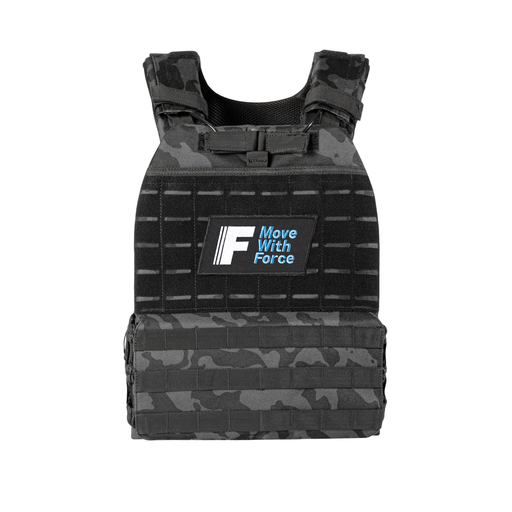
Challenge yourself with military rucking weights from the world’s armed forces
Ever wondered what the different rucking standards are for armed forces around the world? Take on the challenge of different weights used by special forces and military recruits.
Does the armed forces use rucking?
Rucking is a test of fitness, endurance, and mental strength. It’s no coincidence that the world’s most elite military must prove themselves with rucking during selection and again throughout the training pipeline.
Rucking helps military personnel train endurance, speed, and mental fortitude by carrying essential gear and heavy equipment over long distances. Here’s how some of the armed forces around the world use rucking weights during selection and training.
What do armed forces carry during training?
The history of rucking is rooted in military training. Different military forces still use backpacks or rucksacks designed to be walked or run over long distances. The weight military carry during rucking can vary by distance, terrain, and individual fitness levels, and whether the rucking is for training or operational deployment.
What weight does different military use for rucking?
Military personnel might carry essential gear such as food, ammunition, first aid, navigation tools and communication devices, protective gear and extra clothing. As well as their ruckpack, military will often also wear standard uniform and protective equipment (like helmets and body armour) which will add to the total weight carried.
Rucking weight for United States Navy SEALs
In training, USA Navy SEALs will usually have ruckpacks of around 86lbs (39kgs) – and that’s without their water and food.
Rucking weight for the United States Army
To gain the Expert Infantryman Badge infantry candidates must complete a 19km ruck march with a ruckpack of 31.75kgs. And the cut-off is 3 hours. Marine Corps carry 60-90lbs (7-41kgs) for rucks at 3mph. Their full uniform add around 3kgs, and rifle is an extra 3.5kgs.
Rucking weight for the British Army
British Army Infantry, Parachute Regiment, and Commando personnel typically carry 25kg ruckpacks. Royal Engineers and Royal Artillery carry a little less, at 20kgs. The British Army CFT (Combat Fitness Test) is an 8 mile ruck in 2 hours, with that 25kg pack plus water, rifle, and helmet.
Rucking weight for United States Army Special Forces
The green berets carry ruckpacks of 45lbs (20.5kgs), and that’s before anything is loaded into them – including the water they have to carry.
Rucking weight for Canadian Army
The Canadian Army’s basic fitness test involves rucking 13km in full combat gear with a ruckpack – total weight 24.5kgs. The pack itself weights around 10kg empty thanks to its internal frame.
Rucking weight for US Army Air Assault School
The US Army Air Assault School qualifies soldiers to conduct airmobile and air assault helicopter ops, and only around 45% of hopefuls make it through (about 15% don’t make it past the first day). They are expected to ruck with a pack that weighs 35lbs (16kgs) by itself – before anything is added.
Should you use military rucking weights in your own training?
Armed forces around the world use 15kgs upwards in regular ruck marches against the clock. Does that mean you should strive to use these standards in your own rucking workouts?
As a civilian, it makes sense to build your rucking weights up slowly, and to calculate them by your own bodyweight. A great goal is 10% of your bodyweight to begin with, rising to 15% as you get stronger and fitter.
If you want to challenge yourself by taking on one of the world’s elite military forces’ rucking weights, make sure your joints are ready for the load! Don’t jump straight into the heavy weights (especially if your bodyweight is on the light side). Take on the challenge as the pinnacle of structured training block.
Best rucking packs for heavy ruck training
When you’re going heavy, you really need a quality rucking backpack that will stay secure and comfortable. Force Fitness ruckpacks and rucking plate carriers are designed to carry seriously heavy loads so you can ruck further and go harder. Check out the full range.

















